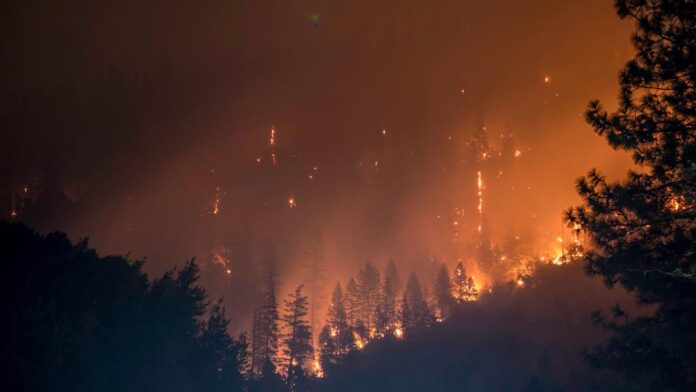This fall, Central Okanagan Emergency Operations officially lifted Kelowna’s state of local emergency. Now that the ash has settled, it’s a good time to recap and reflect on B.C.’s perennial wildfires, and their catastrophic effects. This past summer has held the highest record of wildfires in the history of the province, and the devastation has resulted in multiple large-scale evacuations, and worsening air quality across the province.
According to the B.C. Government, “since April 1, 2023, 457 wildfires have burned 869,861 hectares in British Columbia. The 20-year average for this time of year is 16,218 hectares.” For scale, that means a combined area 2,148 times larger than Stanley Park has gone up in flames in just the past six months.
The two main causes of wildfires are human activity, and lightning strikes. Bruce Ralsto, B.C’s minister of forests explained that lightning is the main cause of fires during the summer, whereas people are responsible for setting most fires in the fall season.
According to CBC News, the B.C. Wildfire Service explained that some of the ways fires can be caused by people include “vehicle and engine use, industrial activities, fireworks, sky-lanterns, outdoor flames, or discarding burning items such as cigarettes.”
The Donnie Creek Wildfire, first detected on May 12, was determined to have been caused by a lightning strike. It is recorded as the largest wildfire in B.C. history. It destroyed 534,388 hectares of the province this summer, accounting for 62 percent of the total land area burned — an expanse 14 times larger than Abbotsford, which is “the largest municipality by area in the Lower Mainland.”
During the worst of the forest fires, thousands of people were evacuated in cities such as Kelowna and Yellowknife.
Large-scale forest fires can become harder to bring under control. The B.C. government explained that one of the ways that it can be better handled is by “focusing on suppression activities around communities and critical infrastructure and monitoring the fire where these values are not at risk.”
Natural factors also contributed to the advanced growth of the wildfires. According to a government report, “It is not uncommon for boreal forest types to experience fires of this size in the spring, and they are especially fire-prone during the prolonged drought conditions we are currently experiencing, which contribute to advanced fuel drying.”
According to CBC News, environmental factors such as abnormally hot temperatures, lightning strikes, and recurring drought all play a role in contributing to these historic forest fires.
As of Oct. 4, there have been a reported 2,221 wildfires across the province this year, with 333 still burning. Regional fire restrictions persist, as infernos rage into the fall.
Rachel is working towards a BA with a concentration in English and Theatre. She has been employed at The Cascade since Fall 2021 as a Staff Writer and a Jr. News Editor. Currently, she is the sectional News Editor and enjoys meeting and interviewing people as well as taking long walks in nature. Rachel also likes to stay up to date on the latest trends and informs students through her fashion column entitled Campus Fashion.



